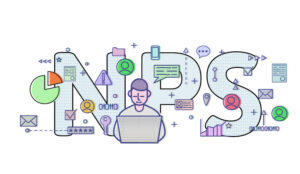Experience management helps businesses move beyond customer service and dig into what their customers and employees value. While customer service is important, experience management can create long-lasting, positive experiences that keep customers returning and workers productive.
In this blog, we cover:
- What is experience management?
- 4 ways to optimize experience management
- A platforms role in experience management
- Frequently asked questions
What Is Experience Management?
Experience management is the process of tracking, analyzing, and improving company operations for the benefit of customers, workers, and the overall brand. Experience management identifies problem areas at every step, from a customer’s buying experience to how well a brand relates to its customer base.
Experience management incorporates brand experience management, product experience management, and employee experience management.
Through the experience management journey, companies can learn more about potential bottlenecks interfering with employee processes, how social media engagements are affecting the company, and more.
Experience management happens in several steps incorporating multiple areas of the company. For example, marketing teams contribute by analyzing market research and using data to inform campaigns, while human resources managers contribute by reviewing benefits packages for employees.
The process is ongoing, ensuring that customers and employees continue to get what they need from a brand.
4 Ways to Optimize Experience Management
Tapping into both customer and employee needs is necessary to keep a business moving forward and a brand expanding positively. Consider using the following strategies to optimize experience management processes.
Use Experience Management-Focused Software
Digitizing experience management can not only save a company time manually collecting and analyzing data, but it can also offer more accurate results.
Brand experience management software can oversee interactions on multiple channels, from both customers and employees, to gauge sentiment analysis and identify potential weaknesses.
Experience management software can also accomplish the following time-saving tasks:
- Synthesize solicited and unsolicited brand feedback
- Evaluate overall brand health
- Detect customer service weaknesses
- Identify how customer sentiment changes over time
- Provide automated and quick follow-up
- Interpret nuance in conversation to offer a more realistic sentiment analysis
Create Journey Maps
You might have heard of customer journey maps, which illustrate a customer’s experience with your company from the moment they find out about your business to the moment they leave a review after buying a product or service.
These journey maps allow you to understand the full breadth of the customer’s journey to optimize each step of the process.
For example, if your analytics show that 50% of customers drop off during the discovery phase of your company, you can focus on improving the lead generation experience, perhaps by overhauling your landing pages or following up with more interesting emails.
Although journey maps are more often mentioned in customer experience management, they can also be used for employees.
What journey does an employee take with your company? Are there specific areas where more support or feedback could be given? Are there opportunities for more recognition or incentives?
Participate in Social Listening
Social listening is the act of monitoring social media channels to learn what people think of your company.
Because customers frequently post on social media when they’ve had a particularly positive or negative experience with a company, social listening is an excellent way to gather feedback that isn’t sent directly to the company.
Having a customer service team dedicated to social listening and responding may help resolve problems quickly.
Analyze, Review, and Revamp
Experience management isn’t a temporary process. Instead, it continues throughout a company’s life, allowing it to consistently update its procedures to evolve with customer and employee needs over time.
Finding the right experience management tool is key, as it will continue to learn more about and grow with your company. However, it’s also crucial to have effective teams and processes in place to rapidly adapt to changing needs.
A Platforms Role in Experience Management
In today’s business world, technology is more important than ever to lean into, especially when it comes to experience management.
Through data collection and analytics, companies of all sizes can learn more about their customers’ and employees’ experiences to create processes that align with both groups’ needs.
A platform drives better experiences using conversation intelligence — encompassing customer experience, product experience, brand experience, employee experience, and more — to capture conversations to offer insights for improvement.
With this data at their fingertips, organizations can spring into action to help mold productive, happy workers and keep customers satisfied.
Frequently Asked Questions
What Is an Example of Experience Management?
An example of experience management for employees is a human resources manager conducting one-on-one interviews with employees to get feedback about a recent benefits package adjustment.
An example for customers is a company’s customer service department using conversation intelligence software to analyze and improve customer communications.
Is Experience Management the Same as Customer Service?
No, experience management differs from customer service. While customer service meets a specific need of a customer, experience management sees the customer throughout their journey with a company.
Experience management also ensures that a company provides employees the tools they need to succeed.
Why Is Experience Management Important?
Experience management is the driving force behind happy employees and customers, two groups a company needs to grow revenue and thrive.
A solid experience management process balances satisfied workers who perform their jobs well with customers who are happy to continue returning to the business.
This blog post has been re-published by kind permission of CallMiner – View the Original Article
For more information about CallMiner - visit the CallMiner Website
Call Centre Helper is not responsible for the content of these guest blog posts. The opinions expressed in this article are those of the author, and do not necessarily reflect those of Call Centre Helper.
Author: CallMiner
Published On: 10th Aug 2023 - Last modified: 9th Dec 2024
Read more about - Guest Blogs, CallMiner






 CallMiner is the leading cloud-based customer interaction analytics solution for extracting business intelligence and improving agent performance across all contact channels.
CallMiner is the leading cloud-based customer interaction analytics solution for extracting business intelligence and improving agent performance across all contact channels. 

































